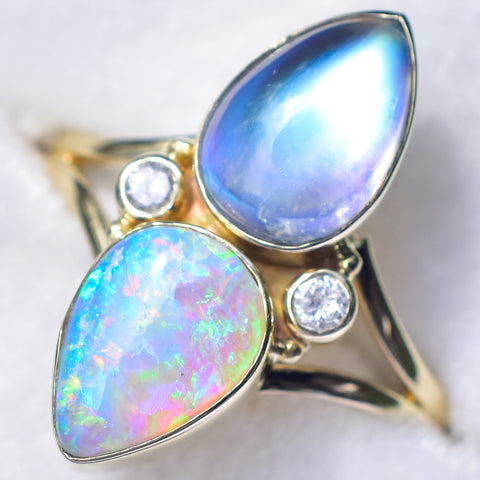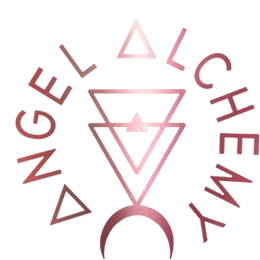
Gemstones are naturally occurring refined and polished pieces of jewels frequently used to embellish metals in jewelry production. Numerous gemstones are found in the different layers of the Earth's crust or underwater. Gems are mineral crystals, organic materials, or hard rocks, which is why some stones are often referred to as hard stones. Some gemologists classify gems based on hardness despite many criteria upon which stones are now categorized. You might have heard the terms precious and semi-precious stones. The following description explains how jewelry makers classify gems and the difference between precious and semi-precious stones.
Classification Criterion:
Ancient Greeks first used the terms precious and semi-precious stones depending on their rarity, hardness, and value. At that time, rare, almost translucent, and hardest to scratch stones were considered precious. Nevertheless, with the advancement in technology, knowledge in gemology, and research on gemstones, it is clear that we cannot classify gems into precious and semi-precious categories depending on their value. It is because many semi-precious stones are more valuable than a few precious stones; for example, tsavorite, which belongs to the group of inexpensive garnets, is much more valuable ad pricey than average quality emeralds.
Some gemologists also classify gems based on hardness level on a Mohs scale, with diamonds having the highest grade ranging from 8 to 10. Moreover, gemologists do not have any objective criteria for classifying gems. Commercially, using the terms ‘precious’ and ‘semi-precious’ based on gems' worth is misleading; it is still in use. In this context, diamonds, rubies, sapphires, and emeralds are precious stones, and all others are semi-precious. Some industry insiders still have found the difference between them, described below.
General Comparison Between Precious and Semi-Precious Stones:
|
Parameters |
Precious Stones |
Semi-Precious Stones |
|
Definition |
Rare, luxurious, and expensive gems used in jewelry making. |
Less rare, lower value, and less attractive than precious stones. |
|
Composition |
These are composed of different elements; for example, diamonds comprise carbon atoms, whereas rubies contain aluminum oxide. |
These are made of either organic materials, minerals, or rocks. |
|
Origin |
Precious stones are found in different layers of the Earth's crust, particularly the mantle. |
Semi-precious stones originate in various geographical areas in Earth's igneous, sedimentary, and metamorphic layers. |
|
Examples |
Diamond, Ruby, Sapphire, Emerald |
Moonstone, aquamarine, rose quartz, turquoise, amethyst, garnet, lapis lazuli, etc. |
The Four Precious Stones:
Here’s a brief description of four precious stones that makes them different and unique from semi-precious stones.
Diamond
Diamond is the most luscious mineral primarily and solely composed of carbon atoms. It is the hardest gemstone on the Earth's crust, with a hardness level of 10 on the Mohs scale. Moreover, diamonds exist in transparent, translucent, and opaque states depending on the purity of the mineral. The purest diamonds are the most translucent in their respective colors. The popular hues in these gems are white, pink, yellow, green, violet, red, and blue. These precious gemstones are also used in jewelry making, mainly celebrated as engagement and wedding rings.

Sapphire
Sapphire is also a precious gemstone that primarily comprises aluminum oxide with other trace elements like titanium, vanadium, and magnesium. It is the third hardest gem, with a hardness level of 9 on the Mohs scale. Traditionally blue sapphires are most popular and used in jewelry production. Nevertheless, voguish jewelry styles also prefer parti sapphires which are bi-colored gemstones. These are the most celebrated gemstones in the Royal family, as the princess Kate Middleton wore an 18-carat sapphire ring on her engagement.

Ruby
Ruby is a natural gem with its remarkable brilliance and exquisite red vine hue. Also known as Manik gemstone, rubies are comprised of aluminum oxide, but the bright red hue is due to the presence of chromium ions. Many people confuse pink sapphires with rubies. However, these are two distinct precious stones. Despite natural ones, synthetic rubies are manufactured in laboratories and frequently employed in making artificial jewelry. Moreover, the hardness level of rubies on the Mohs scale is the same as that of sapphires. This La Luna Grande ring by Angel Alchemy is made with natural star Ruby accents on the sides adding to the celestial vibe of the piece.

Emerald
Emerald is another precious gemstone belonging to the mineral beryl category. On the Mohs scale, the hardness level ranges from 7.5-8, which makes them poorly resistant to scratches. Traditionally, green emeralds are extremely popular in the jewelry industry. Nevertheless, the color, saturation, and tones vary.

Some Semi-Precious Stones
The following are some unique and valuable semi-precious stones.
Tourmaline
Tourmaline is a crystalline silicate gemstone categorized as semi-precious by commercial jewelry makers. It is primarily composed of boron compounded with other elements, e.g., iron, aluminum, and magnesium. Tourmaline is a beautiful crystal with eye-catching hues like pink, green, and yellow. Moreover, some of them, known as watermelon tourmaline, reflect a green hue at one angle and pink at the other. Like precious stones, tourmaline is popularly used to embellish jewelry items, particularly tourmaline rings.

Amethyst
Amethyst belongs to the category, ranging in enchanting hues from pale purple to deepest violets with a hardness level of 7 on the Mohs scale. According to gemologists, amethyst repels and removes souls' rage, anxiety, and depression. Being a semi-precious stone is frequently employed in jewelry making. In addition to the natural amethyst, synthetic ones are also grown in labs.

Aquamarine
Aquamarine, as the name indicates, has a seawater color, more precisely, a light bluish to a greenish semi-precious gemstone. Due to its abundance in nature, aquamarine is more inexpensive than blue topaz. Nevertheless, its rarest variety, called maxixe, is a valuable gemstone. A surprising fact is that aquamarine color changes with heat levels. The gem is also used in sculpture making instead of its application in jewelry adornment.
Moonstone

Moonstone, a well-liked semi-precious stone, is popular because its schiller effect creates a pearly luminance resembling moonlight. It belongs to the feldspar group and is also known as hecatolite. It has been widely employed in jewelry creation since the Medieval Era. According to gemologists, moonstone aids in calming souls and reduces stress and emotional instability. People worldwide love wearing rings embellished with moonstones in a bezel setting.


